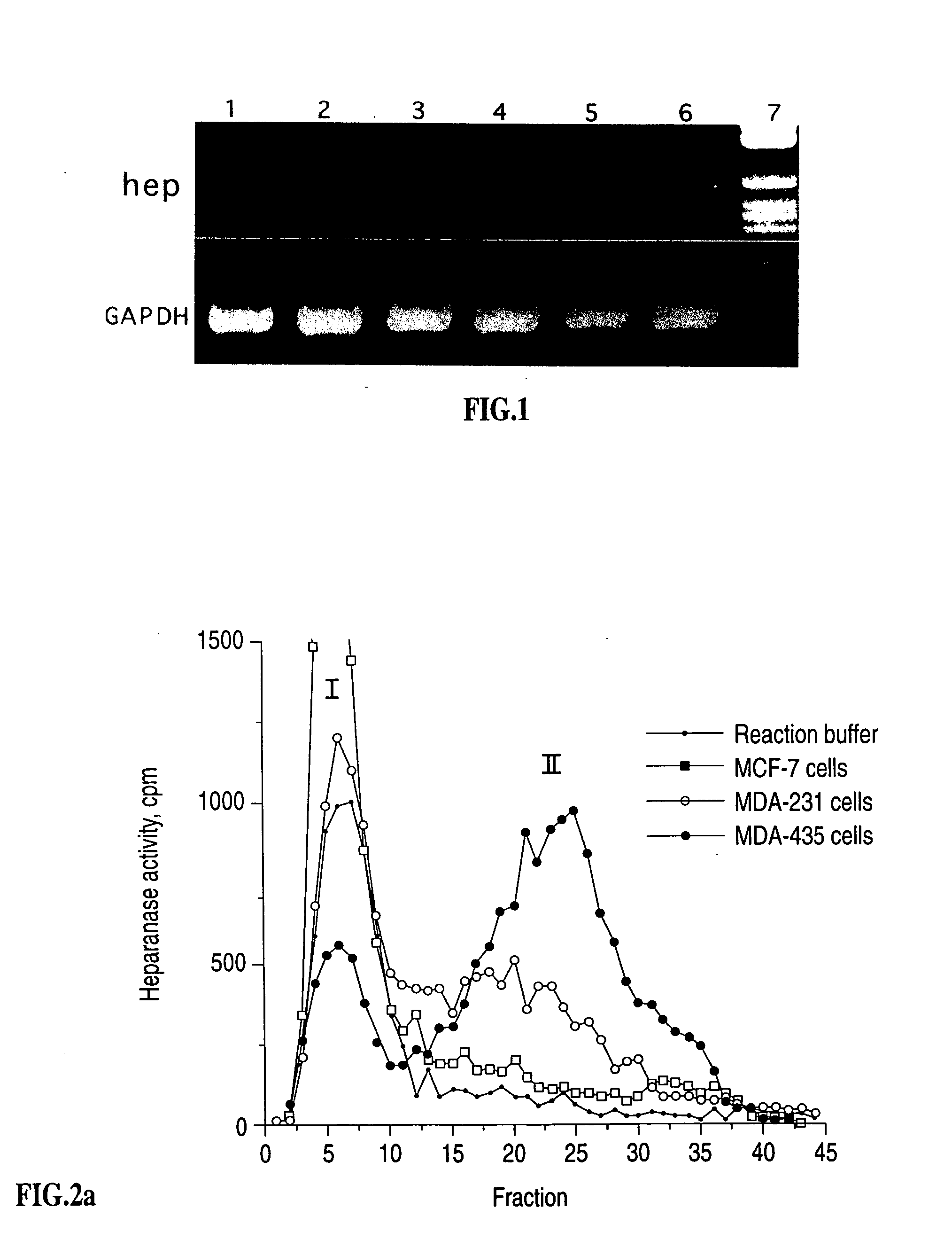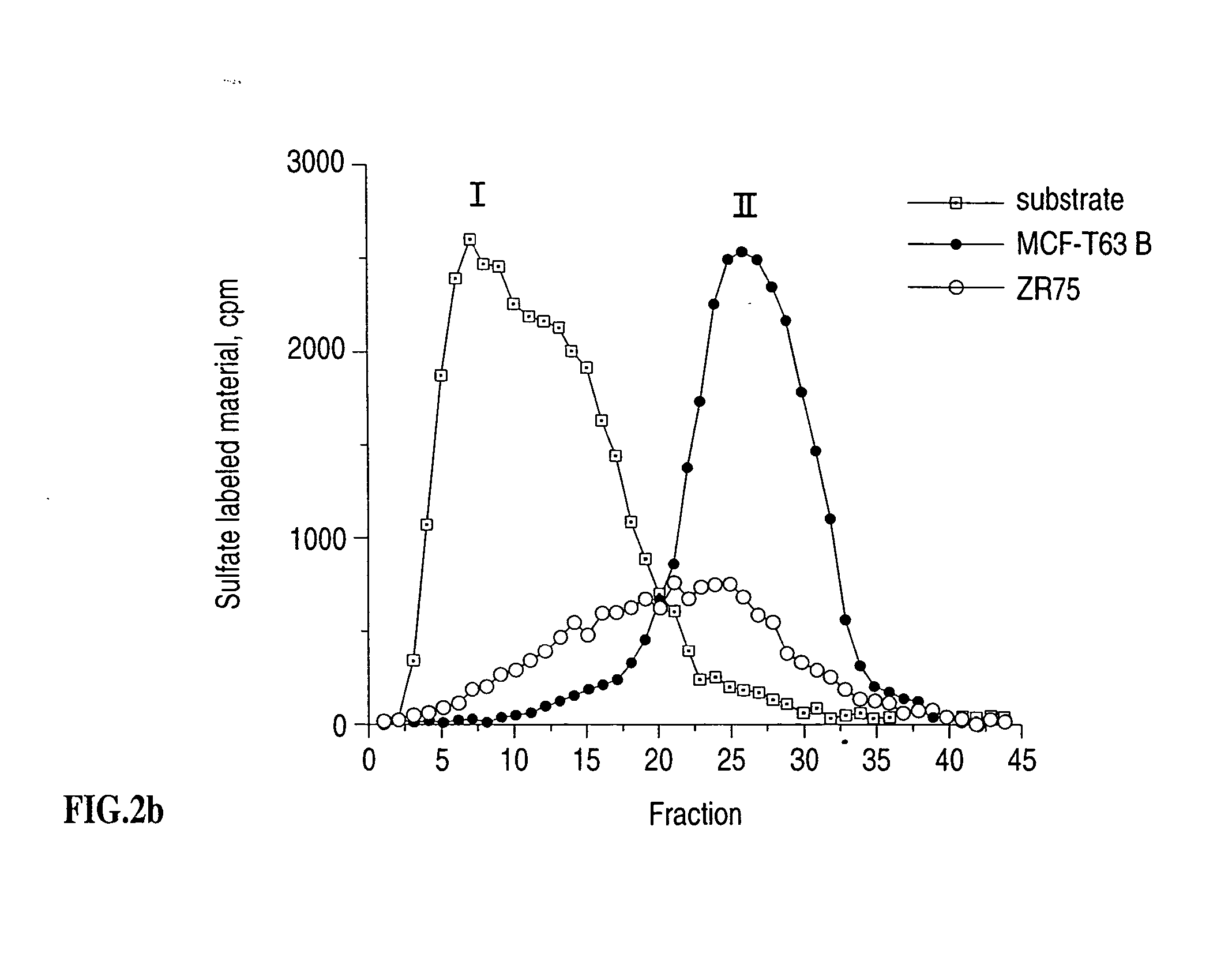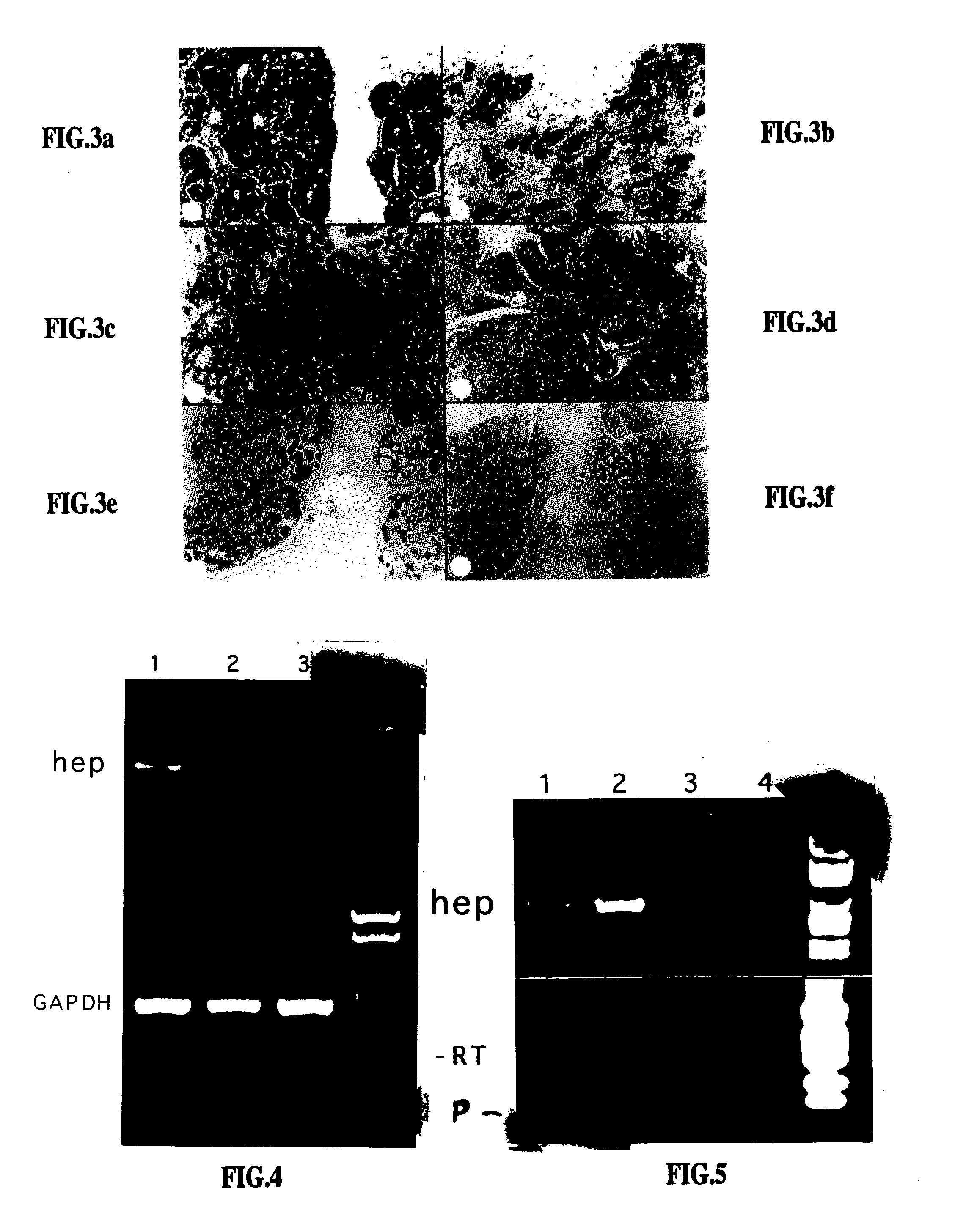Heparanase specific molecular probes and their use in research and medical applications
a molecular probe and heparanase technology, applied in the field of heparanase specific molecular probes, can solve the problems of inability to express heparanase active ctapiii/nap2, and difficulty in purification to homogeneity and characterization of mammalian heparanases
- Summary
- Abstract
- Description
- Claims
- Application Information
AI Technical Summary
Benefits of technology
Problems solved by technology
Method used
Image
Examples
Embodiment Construction
[0113] Reference is now made to the following examples, which together with the above descriptions, illustrate the invention in a non limiting fashion.
[0114] Experimental Methods and Materials
[0115] Cells: Cultures of bovine corneal endothelial cells (BCECs) were established from steer eyes as previously described (19, 31). Stock cultures were maintained in DMEM (1 gram glucose / liter) supplemented with 10% newborn calf serum, 5% fetal calf serum (FCS). bFGF (1 ng / ml) was added every other day during the phase of active cell growth (14, 15).
[0116] Preparation of sulfate labeled substrates: BCECs (second to fifth passage) were plated into 35 mm tissue culture plates at an initial density of 2.times.10.sup.5 cells / ml and cultured in DMEM supplemented with 10% FCS and 5% dextran T-40 for 12 days. Na.sub.2.sup.35SO.sub.4 (25 .mu.Ci / ml) was added on day 1 and 5 after seeding and the cultures were incubated with the label without medium change. The subendothelial ECM was exposed by dissolv...
PUM
| Property | Measurement | Unit |
|---|---|---|
| molecular mass | aaaaa | aaaaa |
| molecular weight | aaaaa | aaaaa |
| molecular weight | aaaaa | aaaaa |
Abstract
Description
Claims
Application Information
 Login to View More
Login to View More - R&D
- Intellectual Property
- Life Sciences
- Materials
- Tech Scout
- Unparalleled Data Quality
- Higher Quality Content
- 60% Fewer Hallucinations
Browse by: Latest US Patents, China's latest patents, Technical Efficacy Thesaurus, Application Domain, Technology Topic, Popular Technical Reports.
© 2025 PatSnap. All rights reserved.Legal|Privacy policy|Modern Slavery Act Transparency Statement|Sitemap|About US| Contact US: help@patsnap.com



